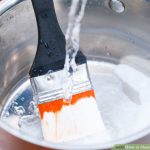Paint Job: Wood Stain and Sealers
Do you have a paint job coming up using stain and sealer for your wood? If so this article is for you. Mill City Restoration will give you the answers you need for that woodworking paint project.
Remember that not all wood is the same. Graining, how tight the grain is, and the type of wood all play into how to treat your project. Some woods will be more porous and will take more stain. Some wood is really hard and won’t take stain as well. Luckily, most paint stores have examples of the way their stain looks on different wood so the most important piece of information is the type of wood you are using. If you are looking for an easy to understand exterior stain guide, check out our favorite stain this year http://www.stormsystem.com/.
Once you have determined the type of wood you are using, and you have chosen the right stain, you are ready to start. Make sure that wood is ready to take stain. If you have a previously stained and sealed surface, you may need to strip and sand. New wood may only need a light sand.
One caution about sanding. If you sand too much or too hard, you run the risk of pushing the grains together, almost polishing the surface of the wood. This makes it harder for the stain to penetrate. Try light sanding. If you are sanding off a finish, try stripping the wood of the stain first. Storm, the company referenced earlier, has some great and easy to use strippers.
Once done sanding and/or getting the wood ready for stain, you need to wipe that wood down to get rid of dust. This is a key. You simply can’t wipe it down too much. Mill City Restoration normally starts with wiping down the wood with mineral spirits. Many times this will open up the grains to accept stain nicely. After wiping down with spirits, but before the stain, get out that tack cloth. It is wonderful for the last amount of dust you didn’t even know was there.
Once you are ready to stain you are at the easy part, even if it feels like the scary part. Depending on the type of stain, you will normally apply by brush or rag. Stain with the grain and do sections at a time Try not to stop halfway through a piece of wood for example.
Once you have the stain on, let it sit for 5 to 10 minute, then wipe it off. This is normally a good amount of time to wait. Maybe you will need another coat of stain to get the color right. Don’t rush it.
Whether interior staining or exterior staining, the above is about the same process. But here is where interior staining differs from exterior staining. Now that the wood is stained in the interior, it is good to seal that wood with either a varnish or a polyurethane. The paint store can help you determine which one is best depending on the use of the wood.
If you are exterior staining, like a porch floor, you may be done. Storm products, for example, require 2 coats on the floor, but no sealer. The bummer is that the stain you did inside will last years. The floor stain may last 3 years. That is the way it goes for now.
Don’t forget to always consult with a professional for all and any paint job you wish to undertake.




Leave a Reply